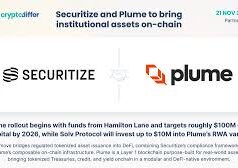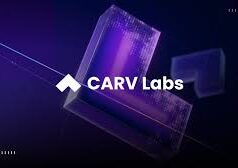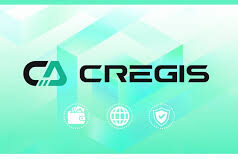The Trump family has made waves in the cryptocurrency world with the launch of World Liberty Financial (WLF) in October 2024. Spearheaded by Eric and Donald Trump Jr., alongside crypto entrepreneurs, WLF has quickly become a major player, raising $5.5 billion through its WLFI token sales and managing a staggering $22 billion USD1 stablecoin. With ambitious plans for crypto lending and decentralized finance (DeFi) applications, WLF is positioning itself as a transformative force in the digital asset space. Let’s unpack this bold venture, its implications, and what it means for the future of finance.
The Genesis of World Liberty Financial
In September 2024, former President Donald Trump announced World Liberty Financial, a crypto venture led by his sons Eric and Donald Jr., with Barron Trump as the “DeFi visionary” and Trump himself as the “chief crypto advocate.” Launched on October 15, 2024, WLF aims to disrupt traditional finance by leveraging blockchain technology for DeFi solutions. The project, based in Las Vegas, partnered with industry heavyweights like real estate mogul Steve Witkoff, his son Zach Witkoff, and crypto entrepreneurs Chase Herro and Zak Folkman, previously of Dough Finance.
WLF’s mission is to “make crypto and America great” by driving mass adoption of stablecoins and DeFi, ensuring the U.S. dollar remains the global reserve currency while embracing decentralized assets. The venture’s flagship products are the WLFI governance token and the USD1 stablecoin, designed to bridge traditional finance (TradFi) and DeFi with secure, transparent solutions.
The $15 Billion Crypto Deal: Breaking Down the Numbers
World Liberty Financial’s financial ascent has been meteoric. By August 2025, WLF had raised $5.5 billion through WLFI token sales, a significant leap from the initial $2.7 million sold by October 2024. The token, initially non-transferable and sold at $0.015 to $0.05 per unit, became tradable in July 2025 after a community vote, boosting its market presence. Currently, 22 billion WLFI tokens have been sold, with secondary market trading on platforms like Whales Market at $0.42—well above presale levels.
The USD1 stablecoin, launched in March 2025, has grown to a $22 billion market cap, making it the fifth-largest stablecoin globally. Backed 1:1 by U.S. Treasuries, dollar deposits, and cash equivalents, USD1 is custodied by BitGo and operates on Ethereum and Binance Smart Chain. A high-profile $2 billion investment from Abu Dhabi’s MGX into Binance, using USD1, underscores its institutional appeal. WLF’s total portfolio, including $229 million in digital assets like Ethereum, wrapped Bitcoin, Aave, and Chainlink, further cements its $15 billion valuation.
WLFI Token: Governance with a Twist
The WLFI token is the backbone of WLF’s governance model. Unlike traditional DeFi tokens like UNI or MKR, WLFI initially offered no economic rights and was non-transferable, focusing solely on governance. Holders can vote on protocol upgrades, marketing strategies, and security measures, giving them a stake in WLF’s evolution. The token’s total supply is 100 billion, with 22.5 billion allocated to the Trump family, 63% to the public, and the rest to founders and community incentives.
The decision to make WLFI tradable, approved in July 2025, marked a turning point. Investors like Justin Sun ($90 million) and Aqua1 Foundation ($100 million) have fueled its growth, with trading expected to launch on major exchanges by late 2025. The token’s value has surged, driven by Trump’s political influence and market enthusiasm, though its long-term stability depends on WLF’s ability to deliver on its DeFi promises.
USD1 Stablecoin: A Bridge to Traditional Finance
The USD1 stablecoin is WLF’s answer to the growing demand for dollar-pegged cryptocurrencies. Designed for stability, USD1 is fully backed by short-term U.S. Treasuries and cash equivalents, with regular audits to ensure transparency. Its $22 billion market cap reflects rapid adoption, particularly after Coinbase listed it and Binance integrated it for a $2 billion deal. Unlike competitors Tether ($150 billion) and USDC, USD1 emphasizes institutional-grade security and regulatory compliance, appealing to sovereign investors and major institutions.
USD1’s integration with Tron, founded by WLF investor Justin Sun, and its use in cross-border transactions highlight its versatility. However, its opaque reserve composition—beyond Treasuries and cash equivalents—has raised questions about yield potential, estimated at $80 million annually if fully invested in Treasuries. Critics argue that Binance or other partners could convert USD1 to other assets, reducing WLF’s profits.
DeFi Ambitions: Lending and Beyond
WLF’s vision extends beyond tokens and stablecoins to a full-fledged DeFi platform. Built initially on Aave V3 infrastructure, WLF aims to offer borrowing, lending, and liquidity pool creation, rivaling traditional banks. Its “WLFI App,” set to launch soon, will allow users to deposit crypto or fiat, access liquidity, and monitor risk in real-time. The platform’s integration with Ethereum, Binance Smart Chain, and Polygon ensures broad compatibility, while partnerships with Chainlink for price data and Sui for asset support enhance functionality.
WLF’s $229 million portfolio, including $47 million in Ethereum and $4.5 million in TRX, reflects its strategic diversification. The “Macro Strategy” initiative, launched in February 2025, focuses on investing in innovative DeFi projects and building trust through transparency. However, the platform’s full DeFi suite is still under development, and its success hinges on user adoption and regulatory clarity.
The $1.5 Billion Treasury Play: ALT5 Sigma Partnership
A defining moment for WLF was its $1.5 billion deal with ALT5 Sigma, a Nasdaq-listed company, announced in August 2025. ALT5 raised $1.5 billion by selling 200 million shares, using the proceeds to acquire 7.5% of WLFI’s token supply, creating a “crypto treasury” akin to MicroStrategy’s Bitcoin strategy. Eric Trump joined ALT5’s board, with Zach Witkoff as chairman, signaling deep integration. This move allows traditional investors to gain WLFI exposure through ALT5 stock, boosting liquidity and legitimacy.
The deal has sparked debate. Proponents see it as a savvy way to bridge crypto and TradFi, with posts on X praising its “institutional legitimacy.” Critics, however, warn of inflated valuations and potential conflicts of interest, given the Trump family’s 40% stake in WLF and 22.5 billion WLFI tokens.
Controversies and Ethical Concerns
WLF’s ties to the Trump family have drawn scrutiny. Ethics experts, including Chris Swartz of Democracy Defenders Action, argue that the venture blurs the line between private enterprise and government policy, raising risks of foreign influence and conflicts of interest. Major investors like Justin Sun, who faced SEC scrutiny before investing $90 million, and Abu Dhabi’s MGX and DWF Labs ($25 million) have fueled concerns about “pay-to-play” dynamics. A New York Times investigation called WLF’s operations “unprecedented in modern American history.”
The SEC’s decision to halt an investigation into Sun’s companies after his WLF investment, and Trump’s pro-crypto policies, including a Strategic Bitcoin Reserve, have intensified criticism. Democratic senators, led by Elizabeth Warren, have opposed stablecoin legislation, citing WLF’s Binance deal as a red flag.
The Competitive Landscape
WLF faces stiff competition from Tether and Circle, with market caps of $150 billion and $34 billion, respectively. Building an ecosystem that rivals these giants is a challenge, as noted by Borderless.xyz CEO Kevin Lehtiniitty. WLF’s reliance on Trump’s brand and political clout gives it a unique edge, but its long-term success depends on delivering robust DeFi applications and maintaining investor trust.
A Crypto Revolution?
World Liberty Financial is at a crossroads. Its $5.5 billion in WLFI sales, $22 billion USD1 stablecoin, and $1.5 billion ALT5 deal position it as a formidable player. The upcoming WLFI App and expanded DeFi offerings could redefine how users interact with crypto. However, regulatory hurdles, ethical concerns, and competition pose risks. Posts on X reflect optimism, with users like @JamesWynnReal calling WLF “the future of finance,” but skepticism persists.
A Bold Bet on DeFi’s Future
WLF is a high-stakes gamble by the Trump family to reshape finance through blockchain. Its rapid growth, institutional backing, and innovative treasury strategy signal a new era for DeFi. Yet, its political ties and untested platform raise questions about sustainability. As WLF prepares for WLFI trading and expands USD1’s reach, it’s a project to watch—both for its potential and its controversies. Whether it becomes the “largest asset management company in the world” or a cautionary tale remains to be seen.
Sources:
- Reuters: Trump’s World Liberty crypto tokens to become tradable
- Wikipedia: World Liberty Financial
- WIRED: Trump Family–Backed World Liberty Financial Sets Up $1.5 Billion Crypto Treasury
- CoinGecko: What Is World Liberty Financial?
- Reuters: Trump’s World Liberty Financial crypto venture to launch stablecoin
- World Liberty Financial: Where DeFi Meets TradFi
- Fortune Crypto: Trump family crypto business announces $1.5 billion treasury company
- CCN: World Liberty Financial (WLFI) Token Launch
- X Posts by @EricTrump and @JamesWynnReal




























Letting a politically linked entity build that kind of crypto firepower could shift markets
It’s like watching a blockbuster play out in real time
This unchecked mixing of crypto and politics is wild
A crypto powerhouse backed by political legacy
Talk about a masterclass in blending narrative, economy, and power
It’s one thing to back stablecoins and tokens, but another entirely when the line between governance and business vanishes